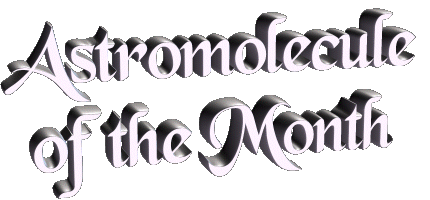|
The first detection of interstellar monodeuterated water (HDO) was reported in 1975 by
Turner et al. toward the
Orion KL
nebula on the basis of one rotational transition at 80.6 GHz. A second transition, at 241.6 GHz, was detected in Orion
KL in 1982 by Beckman et al.
Later detections of additional lines of HDO toward Orion KL and other sources include reports by
Olofsson (1984),
Henkel et al. (1987,
NGC7538),
Petuchowski & Bennett (1988,
Orion A)
Helmich et al. (1996,
W3(OH)), and
Pardo et al. (2001). The most complete observation of HDO
to date is the 2013 report of Neill et al. involved 37
transitions that were detected with the Herschel
HIFI instrument.
HDO was detected in comet
Hayakutake by
Bockelée-Morvan et al. in 1998. It was detected
in icy grain mantles in 1999 by
Teixeira et al.
As shown below (with experimental frequencies taken from the NIST Webbook's entries for
water and
HDO),
the vibrational energy of an OD stretch is about 1000 cm-1 less than that of an OH stretch.
That means that substituting one H with one D reduces the zero point energy of a compound by about 1.4 kcal/mol,
which is enough of a difference to enhance certain chemical reactions to favor reactions involving the deteurated
species over the non-deuterated one. This is the basis of
deuterium fractionation.
| H2O (3657 cm-1)
| H2O (3756 cm-1)
| HDO (2727 cm-1)
| HDO (3707 cm-1)

| 
| 
| 
| |
|---|
|






